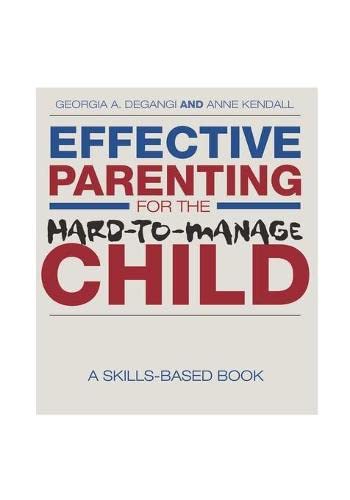Description
Table of Contents
- The Parents’ Practical Guide to Resilience for Preteens and Teenagers on the Autism Spectrum by Je
- Introduction
- Chapter 1. Resilience and Autistic Preteens, Teenagers and Young Adults
- What is resilience?
- What impedes resilience?
- Why do autistic people need resilience?
- How can resilience change your child’s life for the better?
- How does a person acquire resilience?
- What does resilience look like for teens and preteens on the autism spectrum?
- Key concepts around resilience
- Protective factors for resilience
- Challenges to resilience
- Autism and the ‘two puberties’
- The value of an autistic/neurodivergent peer group
- Controlled challenges and supported risks
- Chapter 2. Resilience and Autistic Children Aged 11–15 Years
- Common characteristics of autistic children aged 11–15 years
- Getting a diagnosis in preteen or early teenage years
- Autistic characteristics and resilience
- What are risk factors for resilience?
- Thinking about sexuality
- Issues with other teens
- Resilience and bullying
- What are protective factors for resilience?
- Promoting and supporting independence
- Autistic peers and role models
- What does resilience look like at this life stage?
- Chapter 3. Autistic Children Aged 11–15
- Starting high school
- Activities to help build resilience and confidence around starting high school
- Homework and exams
- Activities to explore different perspectives
- Managing bad news
- Activities around receiving bad news
- Puberty changes
- Activities around the experience of puberty
- Social/emotional puberty
- Letting go of unhelpful activities (e.g. internet addiction)
- Issues with bullying
- Activities supporting resilience and coping strategies around bullying
- Indications of bullying
- Boyfriends, girlfriends and crushes
- Activity around boyfriends, girlfriends and crushes – OPEN FORUM
- Using public transport or taking a school bus
- Activities to support using public transport and/or the school bus
- Death of a grandparent or other relative
- Starting a bank account and learning to manage money
- Activities around managing money
- Chapter 4. Common Characteristics of Autistic Young People Aged 16–20 Years
- What is life like for autistic teens and young adults?
- What does resilience look like at this life stage?
- Forging their own identity
- Belonging, friends and peer groups
- Significant changes – moving to further education and/or work
- Getting a diagnosis in early adulthood
- Social interactions
- Forging their own identity
- Boundaries and limits
- Academic pressure
- Managing the transition to adulthood
- Protective factors and risk factors for autistic young adults
- Navigating available services
- Building self-advocacy skills
- Promoting independence and self-reliance
- Chapter 5. Young Autistic Adults Aged 16–20
- Being told ‘no’ by parents – teenage wishes for independence
- Activities around boundaries and availability
- Attending the school dance, formal or prom
- Activities around school dances, formals and proms
- Parties and social events
- Activities around parties
- Decisions about alcohol and other drugs
- Exercises around the experience of drugs and alcohol
- Making independent decisions
- Activities around responsibility and decision-making
- Thinking about driving and learning to drive
- Activities around driving
- Leaving school
- Activity to help build resilience and confidence around leaving school – OPEN QUESTIONS
- Transitioning to further study
- Activity to counter perfectionism
- Transitioning to work
- Activities to help build resilience and confidence around transitioning to work
- Life skills for leaving home successfully
- Activities to help build resilience and confidence around leaving home
- Managing food – shopping, preparing, eating and cleaning up
- Activities around managing food
- Managing health
- Activities around managing health
- Managing sexuality and sexual health
- Activities around sexual health, sexuality and gender
- Chapter 6. Failing Successfully
- Why failing well is a vital skill
- Failure and mistakes are inevitable
- Making failure useful
- What does successful failure look like in autistic preteens, teens and young adults?
- Challenges for autistic young people around failing
- Impacts of not being able to manage failure well
- Teaching autistic children and young people to fail successfully
- Talking with your children and young people about successful failure
- Exercise around understanding responses to errors
- Building self-esteem and self-confidence for autistic children and young people
- What does self-esteem look like?
- Challenges to self-esteem for autistic children and young people
- Protective factors for self-esteem
- Useful Resources for Parents of Autistic Preteens, Teens and Young Adults
- Web-based resources
- Books
- Books for autistic preteens and teens
- Other resources
- Autism in popular culture
- Index
- Blank Page






